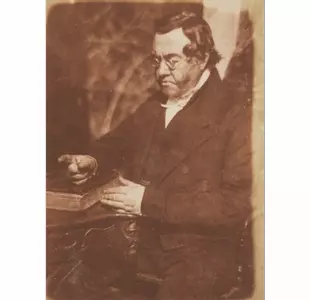William Hamilton Burns
[The following is a slightly edited version of an article published in the December 2020 issue of the Banner of Truth magazine]
William Hamilton Burns (1779-1859), Pastor of Kilsyth
‘One sows and another reaps’ (John 4:37). So it was in the Scottish town of Kilsyth. On the 23rd of July 1839 a remarkable awakening began under the preaching of William Chalmers Burns. It was a spiritual reaping time and many were converted. But it wasn’t Burns who had sown the seed. As in the saying quoted by the Saviour, sower and reaper were distinct. Someone else had laboured and William Chalmers Burns had entered into his labour (John 4:38). That someone was his father, William Hamilton Burns, who had been parish minister in Kilsyth for eighteen years. Back in 2018 an article was posted on the life of William the son; in this one we introduce ourselves to William the father. The Banner of Truth’s recently reprinted biography, The Pastor of Kilsyth, written by another son, Islay Burns, will be our guide.
William Hamilton Burns was born on the 15th of February 1779. His father, John Burns, is described as ‘a fine specimen of that sober, solid, fervent, and truly patriarchal piety, of which the Scottish nation and Scottish Church are happily so rich, and which constitute the true glory and strength of our land’ (p.13). William was one of four sons who were to enter the pastoral ministry of the Scottish church. ‘There is reason to believe’, says William’s biographer, that ‘in the genial atmosphere of that godly home…the germs of saving grace were early sown in his heart, and gradually ripened into a gentle and loving piety, which grew with his growth, and strengthened with his strength’ (p.14). The desire to be a gospel minister was of early origin too.
Ministry in Dun
In the spring of 1779, at what seems to us now the very young age of twenty, William was licensed by the Presbytery of Stranraer to preach the gospel. Just over eighteen months later, on the 4th of December 1800, he was ordained minister of Dun, a small village lying between Montrose and Brechin in the county of Angus. The village and its surrounds had a population of seven hundred. Here Burns was to serve for twenty years.
The story of how he came to be settled there is rather amusing. Under the system of patronage which, in those days, held sway in the Church of Scotland, a prospective minister was presented to a parish. In the case of the parish of Dun the right of presentation belonged to the Laird of Dun. Rumour had it – this was early 1779 – that he wanted to obtain a colleague and successor for Dun’s minister, the Rev. James Lauder, now old and unfit for duty. James, William’s elder brother, lately settled in neighbouring Brechin, was keen that William should be the one. How best to get the laird’s ear? ‘Just address him direct’, advised a friend, ‘and write the very best letter you can; for the laird cannot write a letter himself, and has, for that very reason, an extraordinary respect for any one who can’ (p.56). So James set-to, exerting ‘all his epistolary talents in one grand effort’ (p.57), and with such success that the laird was at the manse door early the following morning, offering William an assistantship. One year later, having given satisfaction to all, William was ordained over the congregation.
The chapter in the biography devoted to his ministry in Dun (Ch.3) is full of interest. We are introduced, for example, to some of his likeminded neighbouring ministers – James Foote of Logiepert (afterwards of the East Church Aberdeen), James Brewster of Montrose, William Hamilton of Dundee, and Walter Tait of Tealing. Glimpses are given of the joys and sorrows of home life – his marriage to Elizabeth Chalmers (‘for fifty-four unbroken years his joy and strength’) and the death, in infancy, of their first-born son John. Through a series of diary entries we gain some insights into his work as a minister. So too into his own inner life with God.
His son, Islay, sums up the Dun years as happy and peaceful but acknowledges that ‘as to ministerial success in the highest sense’ he can find few decisive traces. ‘The tone of religious life in the parish and country round was not high. They were a decent, regular, church-going people – commendably observant of all the outward and routine duties of religious profession, but in few cases searching deeper or rising higher…As a general rule, and with very few exceptions, open ungodliness reigned in the hall, dead indifference in the cottage, and languor and listlessness in the church’ (pp.78-79). It would be many years later and in a very different part of the country that William Burns would see the awakening for which he longed.
The pastor of Kilsyth
In April 1821 Burns settled as parish minister of Kilsyth near Glasgow. It was a significant change from rural Dun. For one thing, the number of inhabitants was far larger. There were over four thousand in the parish as a whole with almost three thousand in the town itself, the majority being handloom weavers and miners. ‘It was altogether a busier, noisier, livelier scene, in which he found himself. Social life was at once more intense, more diversified, and more complicated. There was a greater stir of mind, greater variety of interests and excitements, greater impetus and force of existence every way – intellectual, moral, social’ (p.94).
How were things spiritually? Again, a sharp contrast. Most people in Dun attended church. Not in Kilsyth. Nor were those who did attend especially regular. Burns was assured, in fact, that ‘the Apostle Paul himself could not bring the people of Kilsyth out in a full meeting three Sabbaths running’ (p.98). But if there was far less church-going there was far more genuine Christianity. ‘Instead…of a uniform colour of decent mediocrity, the scene which now presented itself to him was that of a bright centre of living piety, surrounded by a dark shadow of open ungodliness and sin, stretching out on every side’ (p.95. And if Burns had his work cut out for him he wasn’t alone in it. There were many ‘ripe, experienced, intelligent, and prayerfully earnest Christians, who were ready to…bear a helping hand in every good and holy work’ (p.95).
The subject of revival was much upon his mind. Kilsyth had witnessed it in the past. Back in the years 1742-3, under the ministry of the Rev. James Robe, there had been a remarkable work of the Spirit of God. Burns’ ‘public instructions, as well as private conversations at visitations and elsewhere, abounded with allusions to those happy days of the past, the remembrance of which had not yet wholly expired amongst the people, and with expressions of ardent longings for their return’ (p.127). And eventually the signs that they were returning began to appear. There was, for instance, ‘a marked increase of seriousness and devout earnestness in public worship’. The prayer-meetings ‘were more and more thronged with wrestling supplicants and anxious seekers’. Some powerful sermons preached at communion times fell ‘with visibly solemnizing effect on the congregation, and stirred in secret many hearts’. And latterly, there were several remarkable conversions (p.129).
Then came the memorable day, Tuesday 23rd July 1839. As Burns put it himself in a report written later, ‘a decided and unquestionable religious revival took place. We may well say of the amazing scene we have witnessed, “When the Lord turned our captivity we were as men that dreamed.” We have, as it were, been awakened from a dream of a hundred years!’ (p.143). The report itself is given at length in the biography and makes stirring reading. It details both the initial outbreak of revival under the preaching of his 24 year-old son William and the remarkable things that happened in the subsequent weeks. It concludes, ‘Never let us cease, in good times, and bad, to essay to do good, in the morning sowing seed, and in the evening withholding not our hand; thus are we to sow beside all waters. God give the increase!’ (p.164).
Final years
At the Disruption of the Church of Scotland in May 1843 Burns unhesitatingly sided with those who severed their connection with the state to form the Free Church of Scotland. In this he was joined by almost his entire congregation. A new church (and manse) had to be built and for some months the congregation met for worship in the open air. The weather from the first was favourable. ‘Sabbath after Sabbath, for months together, did that congregation, and hundreds of others over the length and breadth of Scotland, in quiet valleys, on bleak hill sides, and on naked shores, meet for worship under the open canopy of heaven; and it has been often remarked, that during all that time there was scarcely one rainy, or even showery Sabbath’ (p.186).
Burns continued on as minister of the Kilsyth Free Church – loving and much-loved – until his death on the 8th of May 1859. His son-in law, the Rev. Thomas Bain of Cupar-Angus, writes, ‘He was, we believe, the father of the Free Church of Scotland, having reached the very advanced period of fifty-nine years of active service as an ordained minister of Christ, and enjoying such vigour and health during all that period, that, as he remarked to several friends, he had only been prevented on two Sabbaths by ill health from preaching the gospel of the grace of God’ (p.197-8).
Assured, just a few days before his death, that the end was near, his response was, ‘I am very glad of it’ (p.199). ‘He had a desire to remain for the sake of his poor flock, who lay very near his heart’, his son tells us, ‘but he had a stronger desire still to depart and to be with Christ, which was far better…His frequent exclamation was, “Let me away! Lord, take me home!”’ (p.199).


